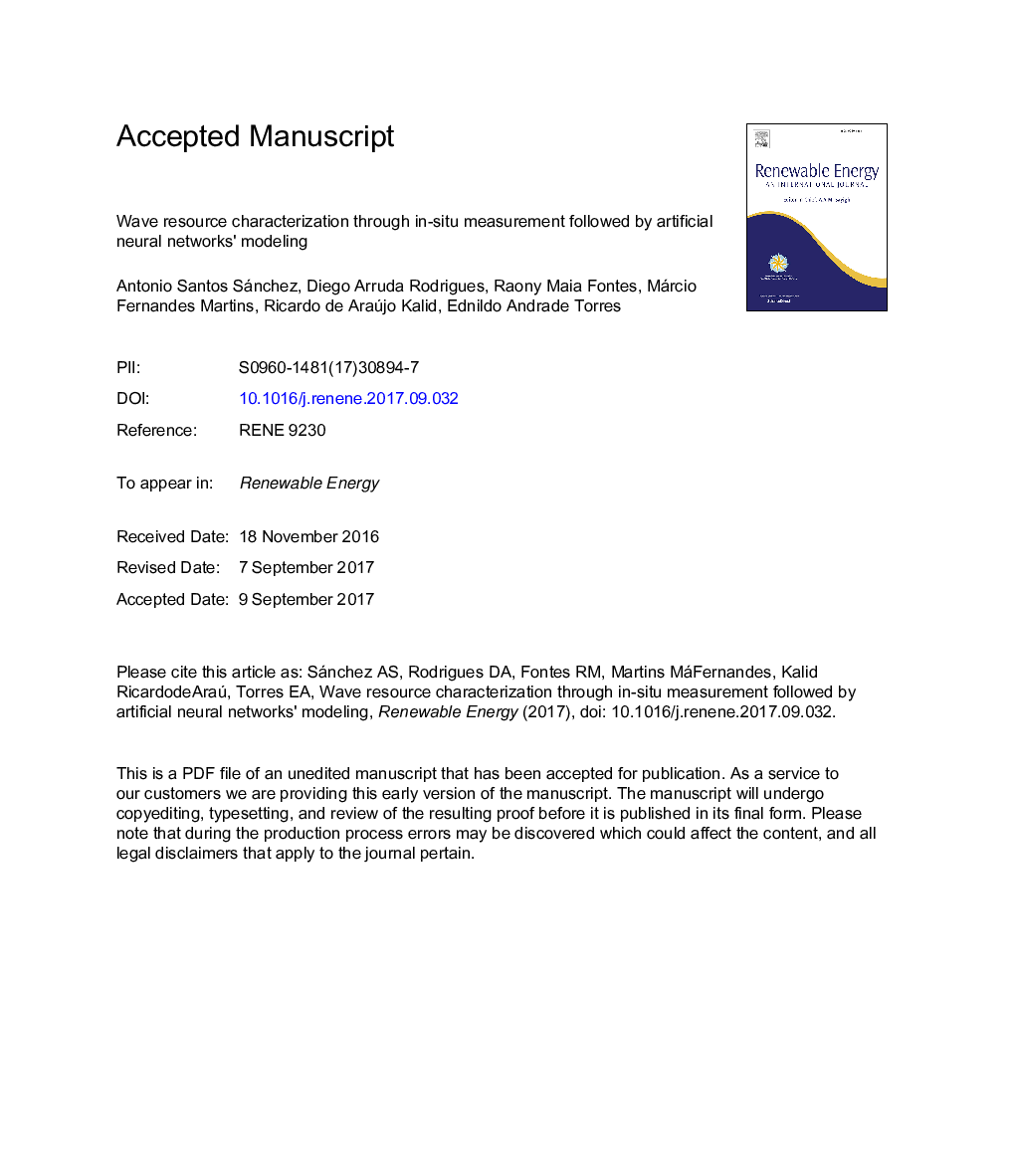| Article ID | Journal | Published Year | Pages | File Type |
|---|---|---|---|---|
| 6765326 | Renewable Energy | 2018 | 35 Pages |
Abstract
This research presents a mathematical model that uses artificial neural networks for the assessment of the wave energy potential of sites, based on data recorded by wave monitoring instrumentation. The model was implemented and validated in two different sites. The first one had a dataset from an upward-looking acoustic Doppler current profiler that recorded a hindcast during 2½ years. The second consisted in data from a buoy using motion sensors that recorded continuously during 23 years. For this second site, the performance of the neural network model was compared to that of the Nearshore Wave Prediction System (NWPS), which combines SWAN, Wavewatch III and other numerical models. For the 2½ years' hindcast, the error of the neural network was significant which suggests a better use for filling missing gaps within datasets than for resource assessment. Meanwhile the performance of the neural network trained with the 23 years' hindcast was satisfactory; better than the NWPS in terms of relative bias but worse in terms of scatter index. Therefore it is concluded that neural networks can make an optimal use of the data produced by wave monitoring instrumentation and are useful to characterize the wave energy resource of a coastal site.
Related Topics
Physical Sciences and Engineering
Energy
Renewable Energy, Sustainability and the Environment
Authors
Antonio Santos Sánchez, Diego Arruda Rodrigues, Raony Maia Fontes, Márcio Fernandes Martins, Ricardo de Araújo Kalid, Ednildo Andrade Torres,
